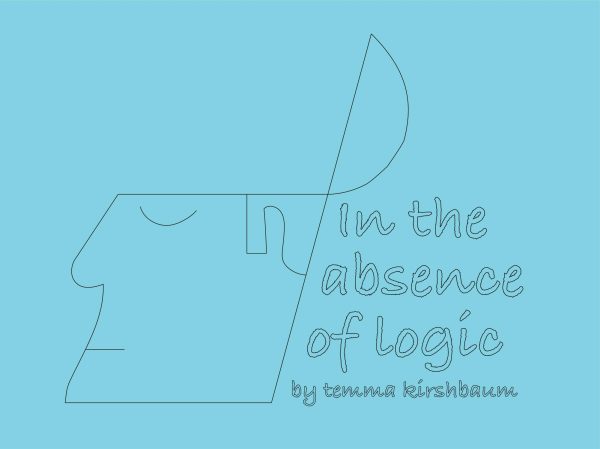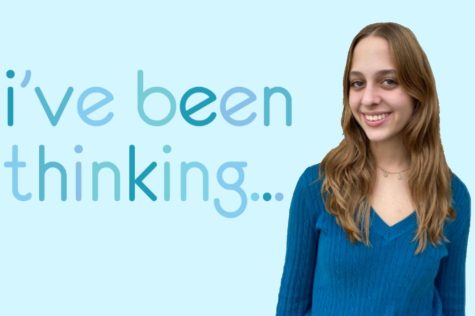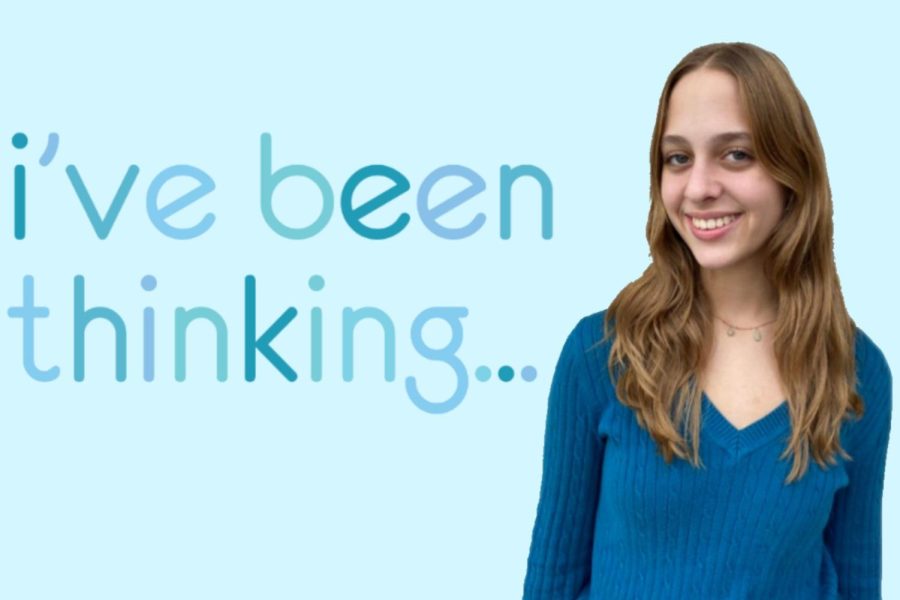COLUMN: Failure face
BP Graphic by Ezra Helfand, BP Photo by Ella Hoenig
CREATIVITY: For Zoe, wearing thrift-shopped clothes showcases her authentic self.
I am a dancer. I have been dancing for most of my life, for the purpose of expression through my body. It is something I love and a passion I hope to never give up, but I suffer from Failure Face.
Failure Face is a term I have coined for what I believe to be a societal norm deeply rooted in our humanity. While I am far from an expert in neuropsychology, and Failure Face has yet to be scientifically identified, I do believe many people have experienced or observed this phenomenon. It is a defense mechanism, used to ensure that the fragile secret that we are all imperfect people just trying to navigate the world is tightly kept.
You may notice it happening in a moment of discomfort when you are feeling out of your element. The corners of your mouth might fall, your brow may furrow – all in an effort to guarantee that the people around you will know that you are aware that you have failed.
This year, I am dancing one night a week for three hours. I attend a competition studio where most of the dancers attend up to six days a week. When I arrive at my Monday night ballet class and take my spot at the barre, I find myself looking around comparing my pliés and tendus to those of my friends. The same friends who spend hours on end at the studio.
When Ms. Julie says to go to the center and work on turns, I can’t help but feel dread wash over me. How can I bobble all of my turns while my peers gracefully land their triples? I have to do something to ensure that they know that I know my turns are bad.
This is where the Failure Face comes to play. Any time I inelegantly fall out of my turn, all I have to do is frown ever so slightly, look around to my friends, and shrug my shoulders to say, “That was probably the most horrific sight you have ever laid your eyes on, and I deeply apologize for my inadequacy to maintain perfection.” This way, I am saving them from having to feel embarrassed for me because they already know I feel it for myself.
But wait a minute. Was I not just in dance class, the epitome of a learning environment? Is this not the place I am supposed to make mistakes? If I am not allowed to mess up in a classroom, am I allowed to mess up at all? Why is it that every time I fear judgment for my incapability to achieve perfection, I must surrender to Failure Face?
The instinctive Failure Face follows me to school. When I raise my hand to ask a question and the answer was obvious to some others, why must I cringe and cower? There is no need to declare defeat to the world.
I would like to make a proposal. We should allow ourselves to fail. I want to fall over in dance class and feel an eagerness that there is opportunity to improve. We should not feel the need to defend our innate nature to err.
We don’t need to resort to Failure Face. Or, perhaps the expression of Failure Face should not be one of defeat, but rather one of triumph, a nod to the world – and yourself – that you are practicing your right as a human to grow, explore, and challenge yourself.
So next time Failure Face creeps up on you in a moment of challenged dignity, combat that impulse by granting yourself the grace to be authentically human. Take pride in your journey towards success, and approach each and every challenge with a smile.




